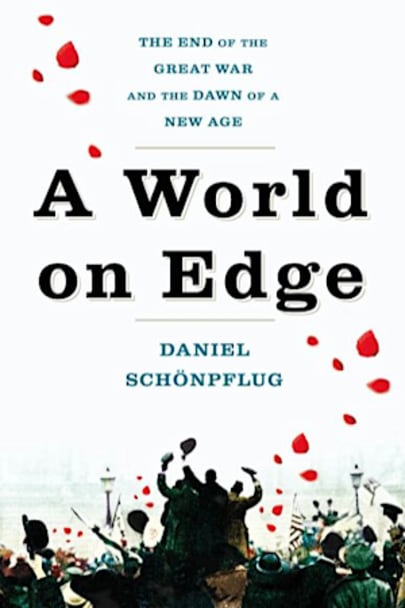The story of the aftermath of World War I, a transformative time when a new world seemed possible–told from the vantage of people, famous and ordinary, who lived through the turmoil November 1918. The Great War has left Europe in ruins, but with the end of hostilities, a radical new start seems not only possible, but essential, even unavoidable. Unorthodox ideas light up the age: new politics, … age: new politics, new societies, new art and culture, new thinking. The struggle to determine the future has begun.
Sculptor Käthe Kollwitz, whose son died in the war, is translating sorrow and loss into art. Captain Harry Truman is running a men’s haberdashery in Kansas City, hardly expecting he will soon go bankrupt–and then become president of the United States. Moina Michael is about to invent the “remembrance poppy,” a symbol of sacrifice that will stand for generations to come. Meanwhile Virginia Woolf is questioning whether that sacrifice was worth it, and George Grosz is so revolted by the violence on the streets of Berlin that he decides everything is meaningless. For rulers and revolutionaries, a world of power and privilege is dying–while for others, a dream of overthrowing democracy is being born.
With novelistic virtuosity, Daniel Schönpflug describes this watershed time as it was experienced on the ground–open-ended, unfathomable, its outcome unclear. Combining a multitude of acutely observed details, Schönpflug shows us a world suspended between enthusiasm and disappointment, in which the window of opportunity was suddenly open, only to quickly close shut again.
more



World War 1 has often been considered one of the fundamental turning points in the 20th Century, and a lot has been written about the war and the events that led to armies fighting across Europe. Not as many books though have been written about the aftermath of the war, or have taken such a broad look at how the aftereffects of the war resonated throughout the years, influencing people, politics, and policies many decades later. Daniel Schönpflug tackles this period, from 1918 to around 1920 in A World on Edge. He looks are a broad collection of people, from writers and artists, composers and soon-to-be politicians, ordinary people that had gone through extraordinary situations, and distills their experiences into a collection of vignettes and scenes to show us how the Great War and the “peace” that followed changed not only individual lives, but the course of the 20th Century.
Schönpflug starts out as World War 1 is ending, giving us a great perspective on the war and the effects that it has had on the world up until that point. We see the events that lead to the armistice on November 11, 1918, and how people reacted. We are introduced to men weary of war, who must do their duty to their country, but who dream of what peace may bring. Schönpflug then follows this collection of people in the years following the war and we see how they continued to change. And it is a diverse collection of people, from the ordinary to the famous (or infamous). From people who would set policy and politics in the future like Matthias Erzberger, Terence MacSwiney, T.E. Lawrence, and Harry S. Truman, to men who fought in the trenches like Henry Johnson and Alvin C. York. Also the artists like Virginia Woolf, George Grosz, and Walter Gropius, or the future revolutionaries like Mohandas Gandhi and Nguyen Tat Thanh (Ho Chi Minh). And the woman who worked to make the poppy the symbol for the horrors of the war, Moina Michael. This is just some of the very diverse group of people Schönpflug introduces us to and through whose eyes we see how the war and the following “peace” changed everything.
A World on Edge may not appeal to some readers of history. By working with a large group of people Schönpflug is not able to dive too deep into any one person’s struggles or experiences. We are given brief glimpses of each person’s life, but not enough to really understand each person. These are not in depth biographies, but brief glimpses for each person. Schönpflug himself says in the afterword that he was wanting to create scenes for each of the people that would carry through the entire narrative. Personally, I liked this approach as I got a broad, very high level look at how the years after the war were shaped by the war itself, and the peace that followed. It gave a holistic approach that allows you to see how many different and widely spaced events – the post-war turmoil in Germany, the rise of the Republic of Ireland, and the future revolutions in places far removed from Europe (India and Vietnam), were all shaped by the aftermath of the Great War.
I recommend A World on Edge for anybody interested in history, especially the history of World War 1, and who don’t mind a high-level, very holistic approach to these events. I learned a lot of information and was able to “fill in” my understanding of this period.